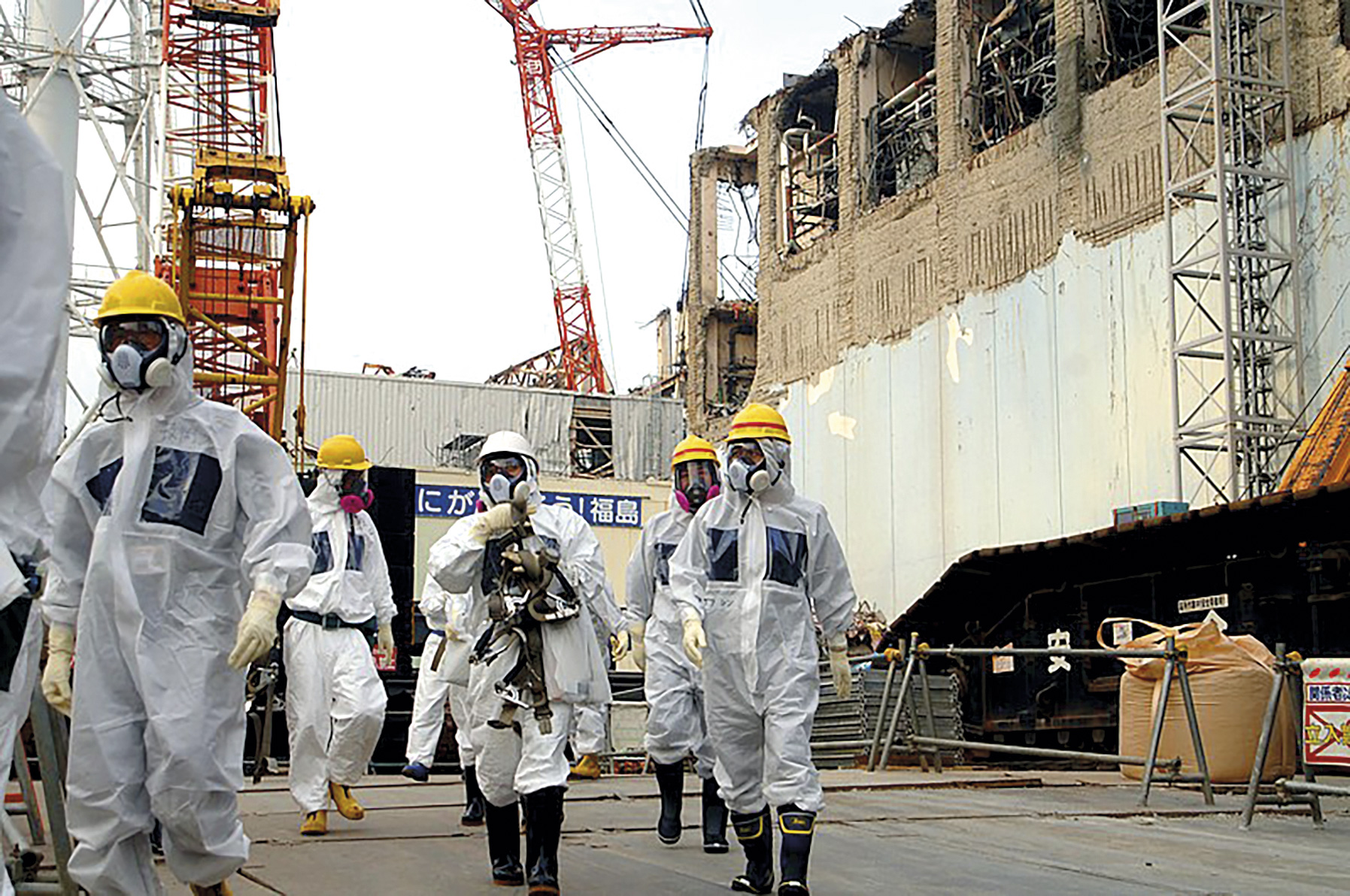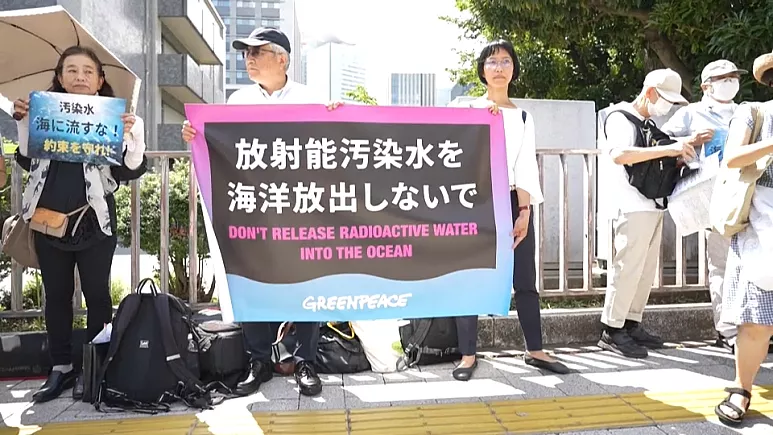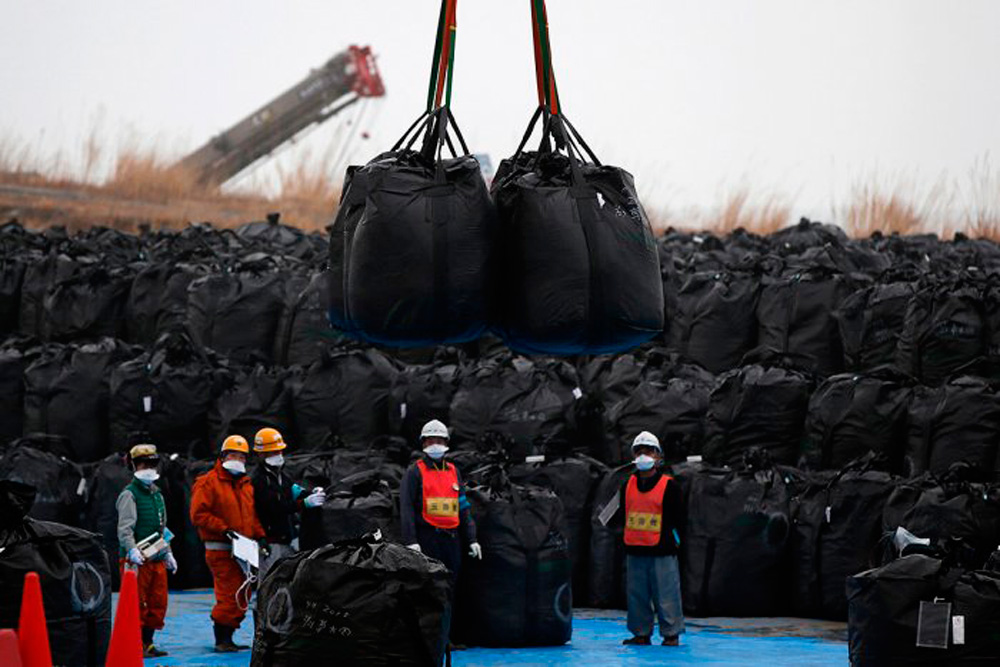The children of Fukushima also have an 'Environmental Space' to learn how nice pollution is
- It is the Creative Environment Space, in which children in the province of Fukushima learn how the human being lives between radiation from time to time. There are more similar exhibitions, organized by the governments of Japan as the region. They say that the authorities must dedramatise one of the greatest atomic disasters the world has seen, a nightmare that was ignited eight years ago and that has not yet been extinguished.

Maxime Polleri, an American anthropologist specialized in atomic energy, has just published an article in The Atomic Scientist Bulletin that reads: “My time in Japan has left me an unforgettable scene: the transparent smile of a child after winning the competition of how to block irradiation. Although he had learned a lot about radioactivity, he knew very little about the complexity of the risks of irradiation. I was led by the last scene of Dr. Strangelove, General Kong sitting on the back of the atomic bomb launched from the plane, screaming:
Polleri quotes film Dr. Strangelove or: How I Learned to Stop Worrying and Love the Bomb is [Dr. Strangelove: How I learned to lose fear and love the atomic bomb], they also offered in Spanish and French the memorable black satire of Peter Sellers in 1964, teaching the skill of industry and the rulers to unlearn about the most serious dangers of the worlds.
For a year and a half, Maxime Polleri has been in Japan, mainly in Fukushima, analyzing how citizens survive in a sick environment. And he summed it up in The Atomic Scientist Bulletin with the good radioactivity of indoctrinating children on the pretext of eliminating the fear of atomic pollution.
The Fukushima authorities have built the Creative Cetro of the Environment, aimed at children and young people. Everything is sweet, starting with the hugs that a hippopotamus pet gives to everyone as a welcome at the entrance. Most attendees are young parents, with their children, condemned to be eternally victims of the Fukushima nuclear disaster.
To learn how to minimize radiation risks, visitors participate in a game in which they can protect themselves from a source of contamination by forming a virtual shield: “In front of an interactive screen, children can block alpha, beta or gamma rays with their own motion. At the end of the game, the most successful was the champion.
Later on, the children are taught what kind of isotopes the plant spilled in 2011, “but represented so they wouldn’t scare him. With afixas and comics, radioactive particles such as plutonium 239 and cesium 137 appear blackened with charming human images. Each particle with its characteristics, one with brown eyes, the other with a special hairstyle. But nowhere is it mentioned that these isotopes can harm health, increasing the risks of cancer, for example.”
Moreover, since the game focuses only on external irradiations, boys and girls will not see anywhere the damage they can produce with the ingestion of the 137 particles of cesium in their bodies, as in muscles or organs, in genes.
Following the explosion and disaster at the Fukushima nuclear power plant, the Government of Tokyo decided to raise the maximum level of radioactivity that a citizen could suffer a year from 1 to 20 millisiervert, as maintained. The Environmental Creation Centre (CEA) does not mention what the authorities have based on to determine that Japanese can suffer 20 times acceptable global irradiation.
Disguised as education, propaganda
Another center of the same nature is the Plaza de la Información de la Decontamination, also in Fukushima, where the systems of purification of the pollution unleashed by the disaster are explained, always in a playful way: a small miniature house is contaminated, you have to take with a shovel the red balls that are pollutants and put them in a beautiful bag. “Decontamination seems inexorable, nowhere is there any indication of the risk of contact, inhalation or deglutition of these pollutants, or of the need to be protected in a special suit for such work.”
The Institute of Radiological Sciences of Japan uses a third strategy to dedramatize the nuclear disaster: linking radiation with the extraordinary advances in science and technology. Chiba was the title of the exhibition organized in the city “I want to know more. What can you do with radiation?” Here the protagonists are the great benefits of radiation in the fight against cancer and the latest generation scanners that have just been invented and that will bring others.
On the contrary, those who seek something in the exhibition about the dangers of the atom must go to the site “The influence of Fukushima”. But this section is much less attractive than others. Four small posters explain the decontamination process, not to mention the health damage caused by these nuclear pollutants. Children, of course, prefer to see gigantic particle accelerators, etc. Radiation appears in them as a person able to enter the body and kill a malignant tumor inside it.
Why this kind of communication operations? “The officials and technical advisers I have interviewed – says Maxime Polleri – have told me that in Fukushima there are ‘many evil rumours about radioactivity and that this happens because of people’s ignorance. That’s why the government is trying to spread ‘the right information’, to channel people’s fears and help them return to Fukushima calmly.”
These disinformation operations have not been invented in Japan. Many years ago, when new nuclear power plants and atomic weapons were built in the United States, in the heat of the Cold War, Walt Disney introduced the propaganda film Our Friend Atom. Much later, when the Chernobyl accident once and for all polluted Ukraine and, above all, the vast expanses of Belarus, the atom industry organised the Ethos operation to regulate the new normality of citizens living in the midst of the disaster. The same plan is currently being implemented in Japan because of complicity with the World Health Organization, denounced by several committed physicians.
Japan needs a picture of normality, both in order to successfully organise the forthcoming Olympic Games and in order not to get too angry with the Japanese. Eight years after the explosion or breakdown of the Fukushima nuclear reactors. 1,120,000 tons of contaminated water accumulated while waiting to be thrown into the sea. 22 million bags of contaminated land. Multiplying the number of thyroid cancer, leukemia, lungs, etc. The reactor has not yet been able to control it. Spreading and accumulating pollution. And an appeal to the citizens to return to their homes calmly.
The Fukushima nuclear power plant exploded on 11 March 2011. The images that were broadcast on television perpetuated the moment of the explosion and the subsequent white cloud in the sky. In the news of the coming days and months Fukushima had special relevance, but the speed... [+]

























